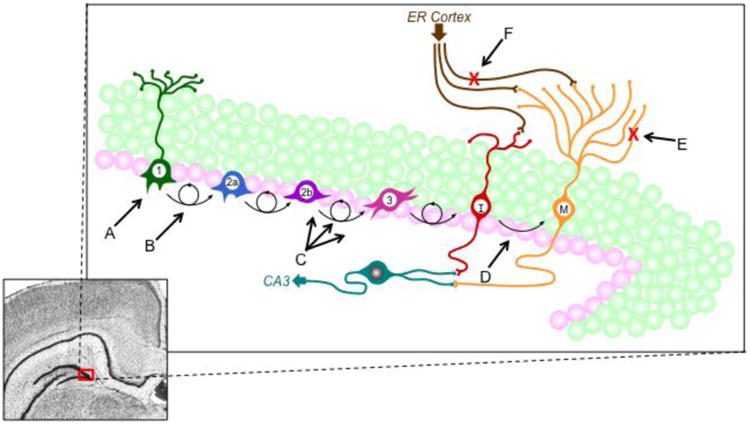Schematic representation of adult neurogenesis and known ways in which alcohol affects this process. Adult hippocampal neurogenesis consists of multiple stages that cells progress or mature through: stem-like radial glia act as the neural stem cell (NSC) and proliferate into neural progenitor cells (NPCs). Type 1 radial-glia like neural stem cells divide asymmetrically and produce a progenitor (Type 2a) that can also divide and produce daughter progenitors (circular arrows indicate that the cell is capable of replicating). The NPC term is used throughout when it is not clear which cell type, the NSC or one of the progenitors, has been examined or if the distinction was not made. These subpopulations of progenitors have varying capacities for self-renewal and differentiation as NPCs may differentiate into a neuronal or glial phenotype (
Bonaguidi et al., 2011;
2012;
Dranovsky et al., 2011;
Encinas et al., 2011). The maturation of these cells progress through Type 3 and immature neuroblast (I) as they migrate and integrate into the granule cell layer (GCL) where they finally become mature granule cells (M; green cells = granule cells; pink cells = SGZ;
Gage, 2000;
Zhao et al., 2008). Alcohol impacts these processes at multiple stages:
Chronic alcohol exposure blunted dendritic arborization in newborn cells (
He et al., 2005), an effect that would have functional implications for new cells incorporation into hippocampal circuitry.

